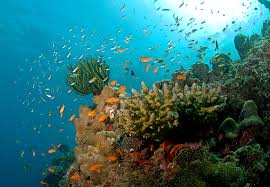Exploring the Andaman Islands: A Tropical Paradise

Introduction
The Andaman Islands, an archipelago located in the Bay of Bengal, are becoming an increasingly popular destination for both domestic and international tourists. Known for their pristine beaches, vibrant marine life, and lush forests, the islands offer a unique blend of adventure and relaxation. Their significance extends beyond tourism, making them a focal point for biodiversity conservation and cultural heritage, especially due to their indigenous tribes.
Tourism Growth and Developments
In recent years, the Andaman Islands have seen a spike in tourist arrivals, with over 600,000 visitors recorded in 2022, a significant increase compared to the previous years. The Union Territory administration has proactively promoted the islands as a safe and appealing destination through various marketing campaigns and improved infrastructure, including better connectivity and hospitality services.
Popular tourist spots include Havelock Island, known for Radhanagar Beach, which has consistently ranked among Asia’s best beaches. Other attractions encompass snorkeling and diving opportunities at North & South Sentinel Islands, rich in coral reefs, and the historic Cellular Jail in Port Blair, which offers insights into India’s struggle for independence.
Conservation Efforts
The ecological diversity of the Andaman Islands is unparalleled, with numerous endemic species of flora and fauna. As a result, local authorities have initiated several conservation efforts aimed at protecting the native ecosystems while promoting sustainable tourism practices. The establishment of the Mahatma Gandhi Marine National Park and the Rani Jhansi Marine National Park illustrates ongoing efforts to preserve marine life while allowing tourists to enjoy these natural treasures responsibly.
Cultural Significance
Home to several indigenous tribes, including the Jarawa and Onge, the Andaman Islands are rich in cultural diversity. Efforts to preserve the heritage and rights of these tribes have gained global attention. The government has been cautious in tourism policies, implementing rules to protect tribal lands from exploitation and over-commercialisation. Understanding the cultural significance of these tribes is crucial for visitors, who are encouraged to respect their ways of life and regulations governing contact with them.
Conclusion
The Andaman Islands epitomise natural beauty and cultural richness, making them a top destination for nature lovers, adventure seekers, and those interested in history and ethnicity. As tourism continues to flourish, it is vital for local authorities and tourists alike to prioritise sustainable practices to preserve the islands’ ecological and cultural integrity. With ongoing conservation efforts and responsible tourism, the Andaman Islands will continue to thrive as a captivating paradise for generations to come.









